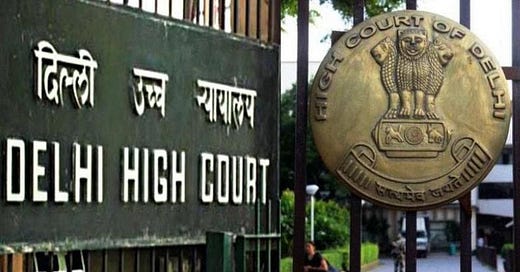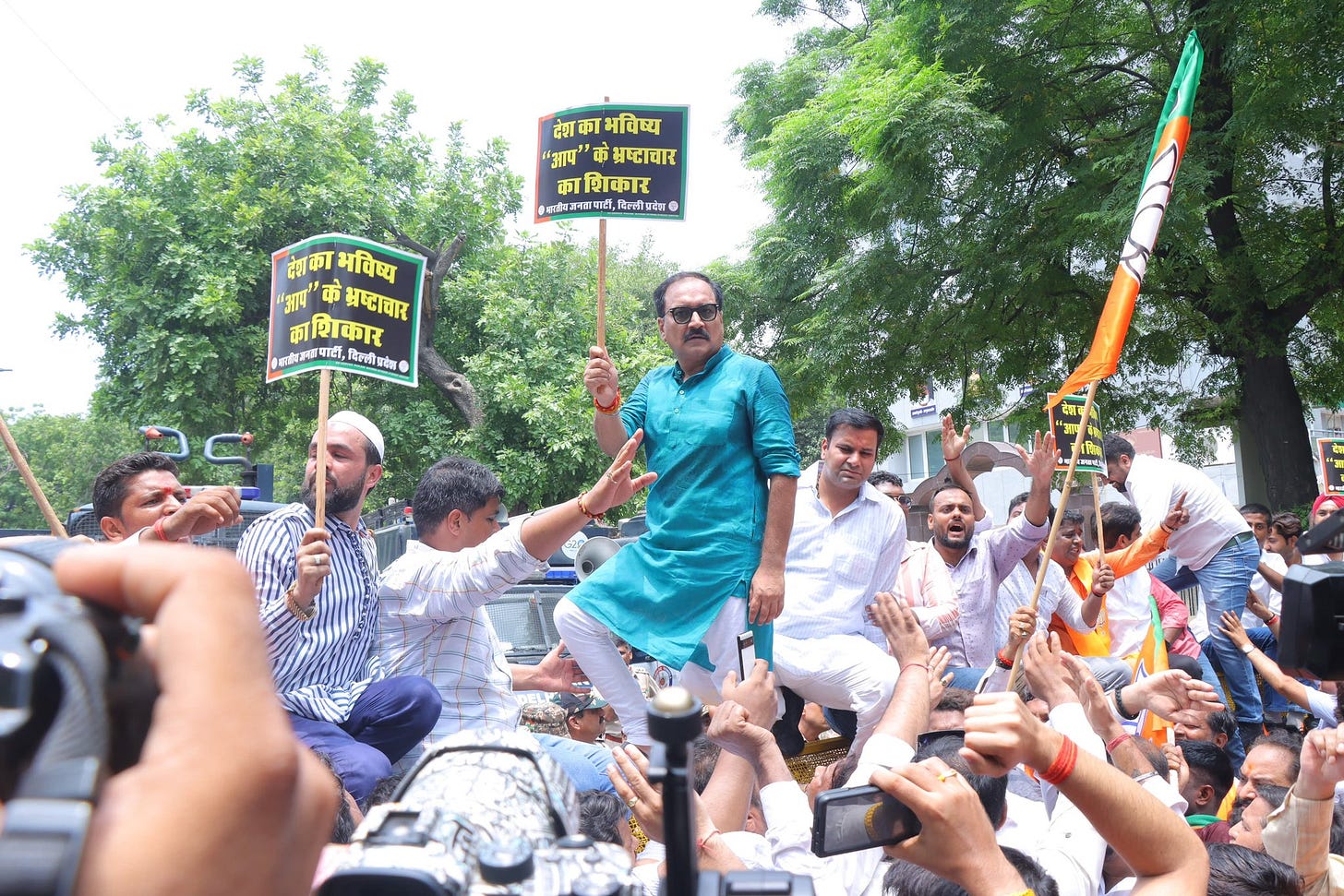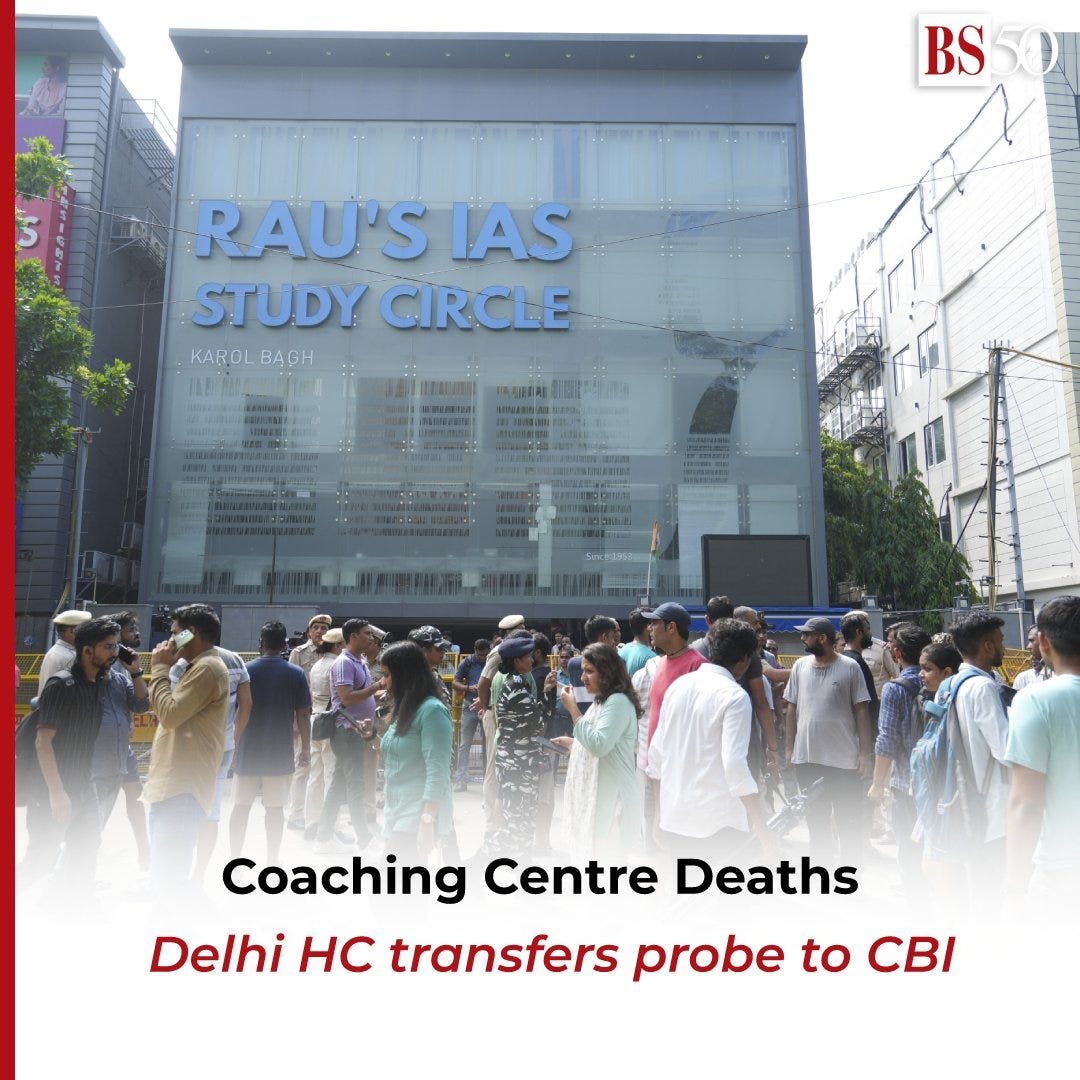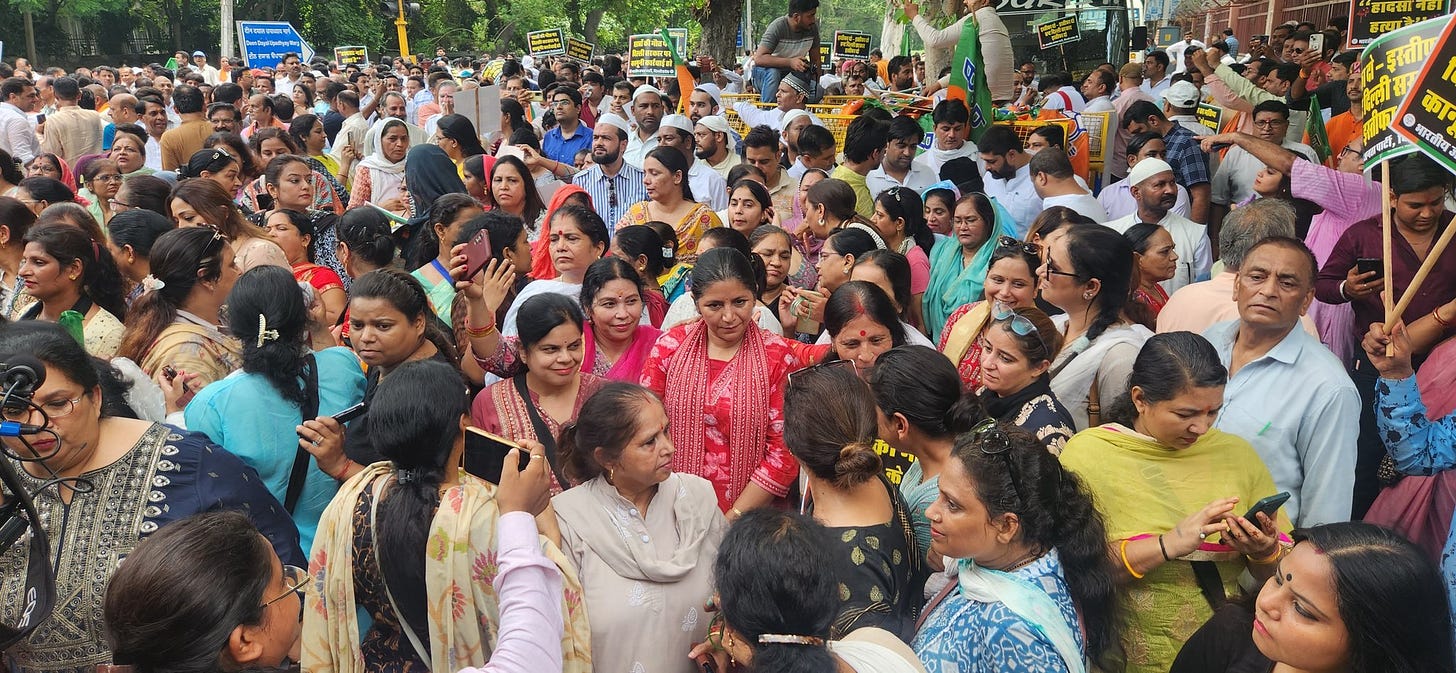Rajinder Nagar Coaching Center Deaths: Delhi High Court Pulls up Top Babus, Transfers Investigation to CBI
Orders the constitution of a committee headed by the Delhi Chief Secretary to develop a comprehensive action plan addressing issues related to waterlogging, drainage, and building regulations etc.
Here's a comprehensive summary of the Delhi High Court proceedings, that concluded barely minutes ago, regarding the Rajinder Nagar coaching center deaths, based on the LiveLaw India Twitter thread:
Formation of High-Level Committee Ordered by Delhi High Court
The Delhi High Court today directed the formation of a committee headed by the Delhi Chief Secretary to investigate the deaths of three civil services aspirants who drowned in a flooded basement in Rajinder Nagar, while transferring the criminal investigation to the Central Bureau of Investigation (CBI). The court ordered that this committee be constituted with the Chief Secretary of the Government of the National Capital Territory of Delhi, the Vice Chairman of the Delhi Development Authority (DDA), the Chairman of the Municipal Corporation of Delhi (MCD), and the Commissioner of Police.
The court, led by Acting Chief Justice Manmohan and Justice Tushar Rao Gedela, was hearing a Public Interest Litigation (PIL) seeking the establishment of a high-level committee to address this tragic incident. The High Court had previously directed the Municipal Corporation of Delhi (MCD) Commissioner, the concerned Deputy Commissioner of Police (DCP), and the Investigating Officer (IO) to be present for the hearing.
Investigation Transferred to CBI
The Delhi High Court also directed the transfer of the investigation of the Rajinder Nagar coaching center deaths case to the Central Bureau of Investigation (CBI). The court cited several reasons for this decision, including the gravity of the incident, potential involvement of corruption among public officials, and the need to ensure a fair and impartial investigation. Additionally, the High Court requested the Central Vigilance Commission (CVC) to appoint a senior official to monitor the CBI investigation. The court strongly criticized the initial Delhi Police investigation and the Municipal Corporation of Delhi (MCD) for their handling of the case, describing the police investigation as "strange" and questioning why MCD officials had not been held accountable despite apparent negligence.
Key points from the proceeding
Criticism of Investigation
The court strongly criticised the police investigation, describing it as "strange" and questioning why MCD officials had not been arrested despite apparent negligence. The bench expressed concern over the arrest of the SUV driver while MCD officials remained uninvestigated. “Mercifully you didn't challan the water. The way you caught hold of the driver,” the Bench observed.
MCD Accountability
The court demanded that the MCD produce all relevant files related to the incident. It questioned why multi-story buildings were allowed to operate without proper drainage systems and criticized the lack of oversight in granting permissions for such structures.Infrastructure and Funding Issues
The bench highlighted the broader problem of inadequate infrastructure maintenance in Delhi, linking it to insufficient tax collection. It criticized the "freebie culture" prevalent in the city's governance.Questioning of Authorities
The court interrogated the MCD Commissioner about the approval process for buildings and basements. It also questioned the police about their investigation methodology and the rationale behind the arrests made.Systemic Failures
The bench pointed out systemic failures in urban planning and management, emphasizing the need for proper rainwater harvesting and drainage systems.Legal Responsibility
The court discussed the potential criminal liability of MCD officials under IPC Section 304A (causing death by negligence) and questioned why they hadn't been charged.Victim Compensation
The bench inquired about compensation for the victims' families and directed authorities to provide details of any compensation offered.Committee Formation
In a significant development, the court ordered the formation of a committee headed by the Delhi Chief Secretary. The court directed that this committee be constituted with the Chief Secretary of the Government of the National Capital Territory of Delhi, the Vice Chairman of the Delhi Development Authority (DDA), the Chairman of the Municipal Corporation of Delhi (MCD), and the Commissioner of Police. This committee is tasked with developing a comprehensive action plan within four weeks to address issues related to waterlogging, drainage, and building regulations.Future Actions
The court indicated that it would continue to monitor the situation and may issue further directions based on the committee's recommendations.Next Hearing
The court scheduled the next hearing after four weeks, expecting progress reports from the authorities and the newly formed committee.
Delhi High Court's Firm Stance on Accountability
Throughout the proceedings, the Delhi High Court demonstrated a proactive approach in addressing not only the specific incident but also the broader systemic issues contributing to such tragedies. The formation of the high-level committee under the Delhi Chief Secretary signifies an important step towards comprehensive urban management reforms in the national capital.
The High Court came down heavily on senior IAS and IPS officers, mandating their personal attendance and refusing to accept routine responses that issues did not pertain to their respective organisations. Civil servants, known for their resilience, are no strangers to such intense judicial scrutiny, but the stern reprimand they received is expected to impel them to take the matter more seriously. This heightened accountability should hopefully reflect not only at the operational level but also in the deliberations and recommendations of the newly constituted committee.
Ensuring Accountability and Action
While the proactive approach of the Delhi High Court in hearing the Public Interest Litigation (PIL) is indeed laudable, it remains to be seen how effectively different government agencies can collaborate in a bureaucratic scenario where they often work in silos. The overlap in jurisdiction and functions of the Delhi Jal Board and the Municipal Corporation of Delhi, as highlighted to the Court, makes pin-pointing individual responsibilities exceedingly difficult. In the best of times, the continuum of responsibility, accountability, and culpability remains fuzzy. There is always a tendency for various governmental agencies to find convenient scapegoats, like the SUV driver, to avoid scrutiny and evade responsibility.
Any overreach can easily morph into a witchhunt if everyone in the chain of command is slapped with criminal charges or disciplinary proceedings for major penalties, including dismissal. It is earnestly hoped that the committee constituted under the order of the Delhi High Court and headed by the Delhi Chief Secretary will not merely apportion blame but develop an actionable and feasible plan to prevent the recurrence of such tragic incidents. Without such a plan, we have no right to describe Delhi as a “Smart City” or to gloat over India being the world’s largest democracy, where the life and liberty of every citizen is valued.







